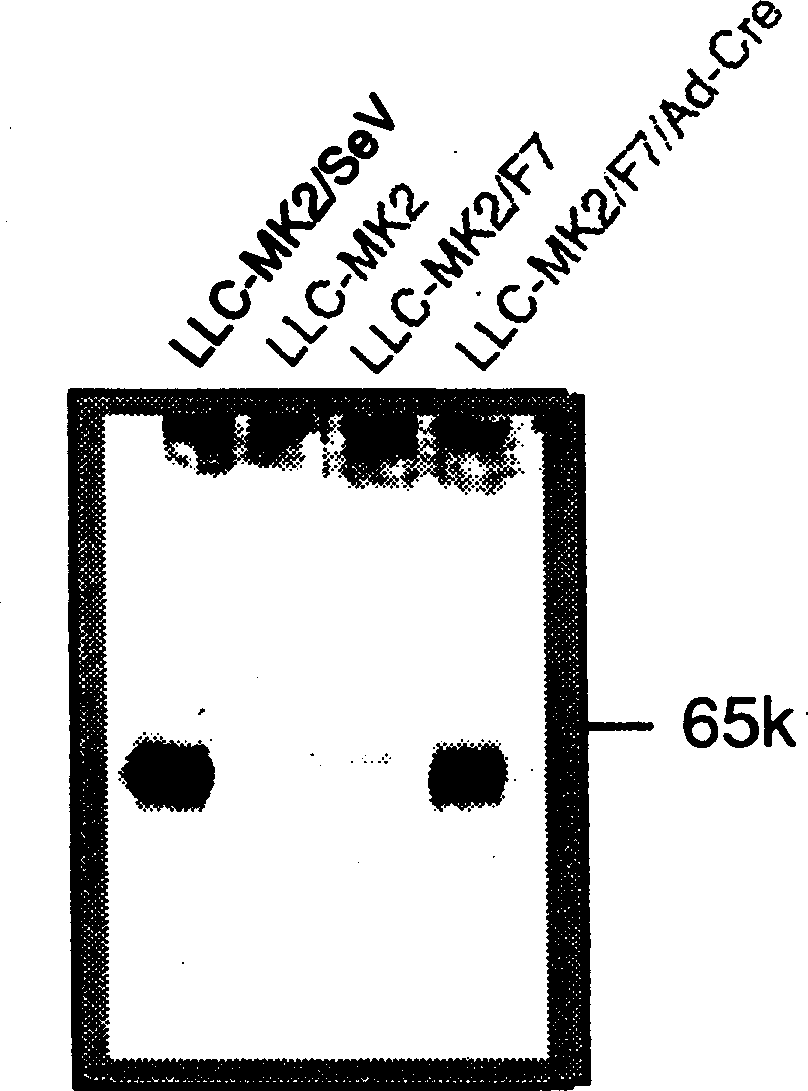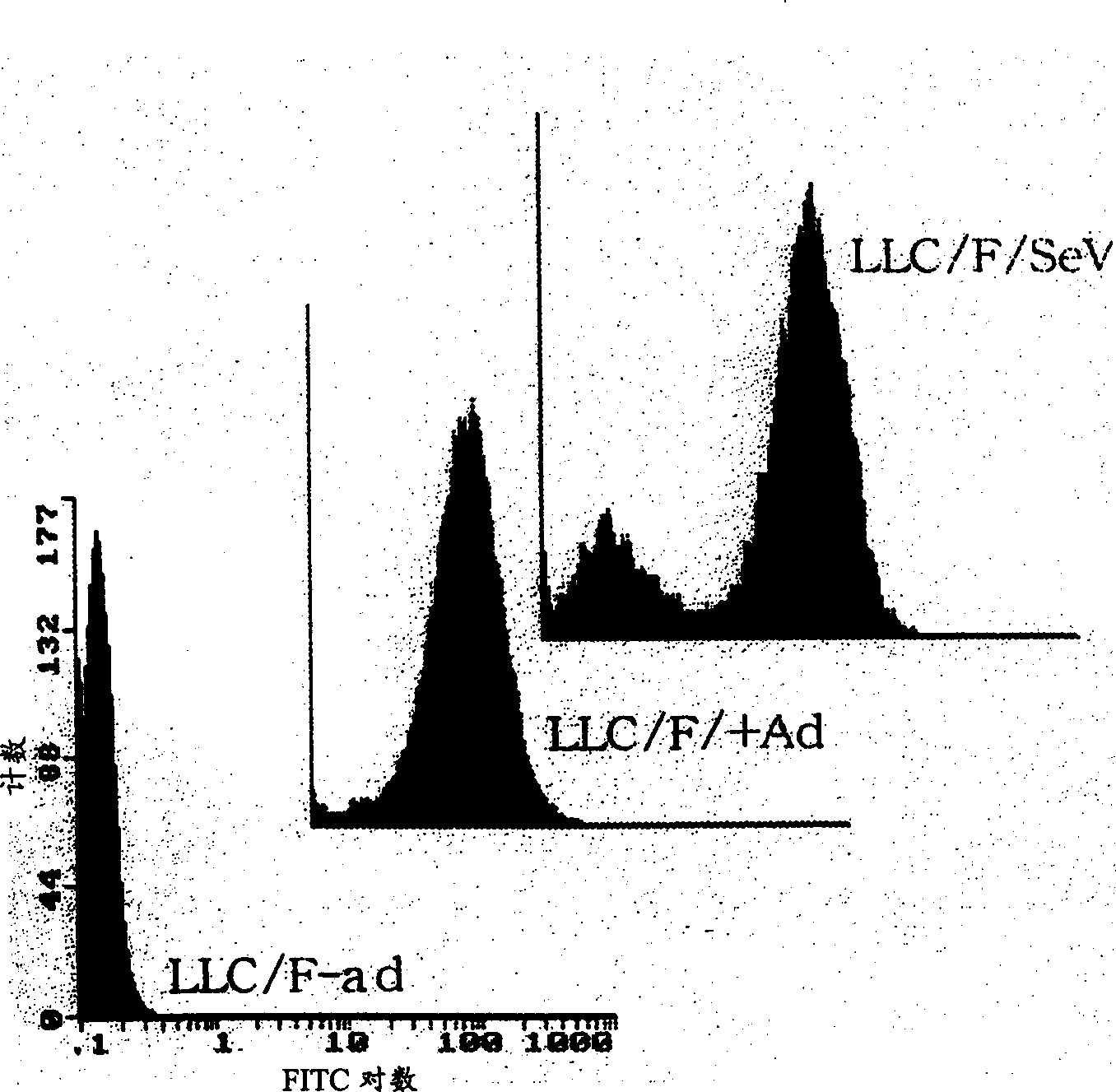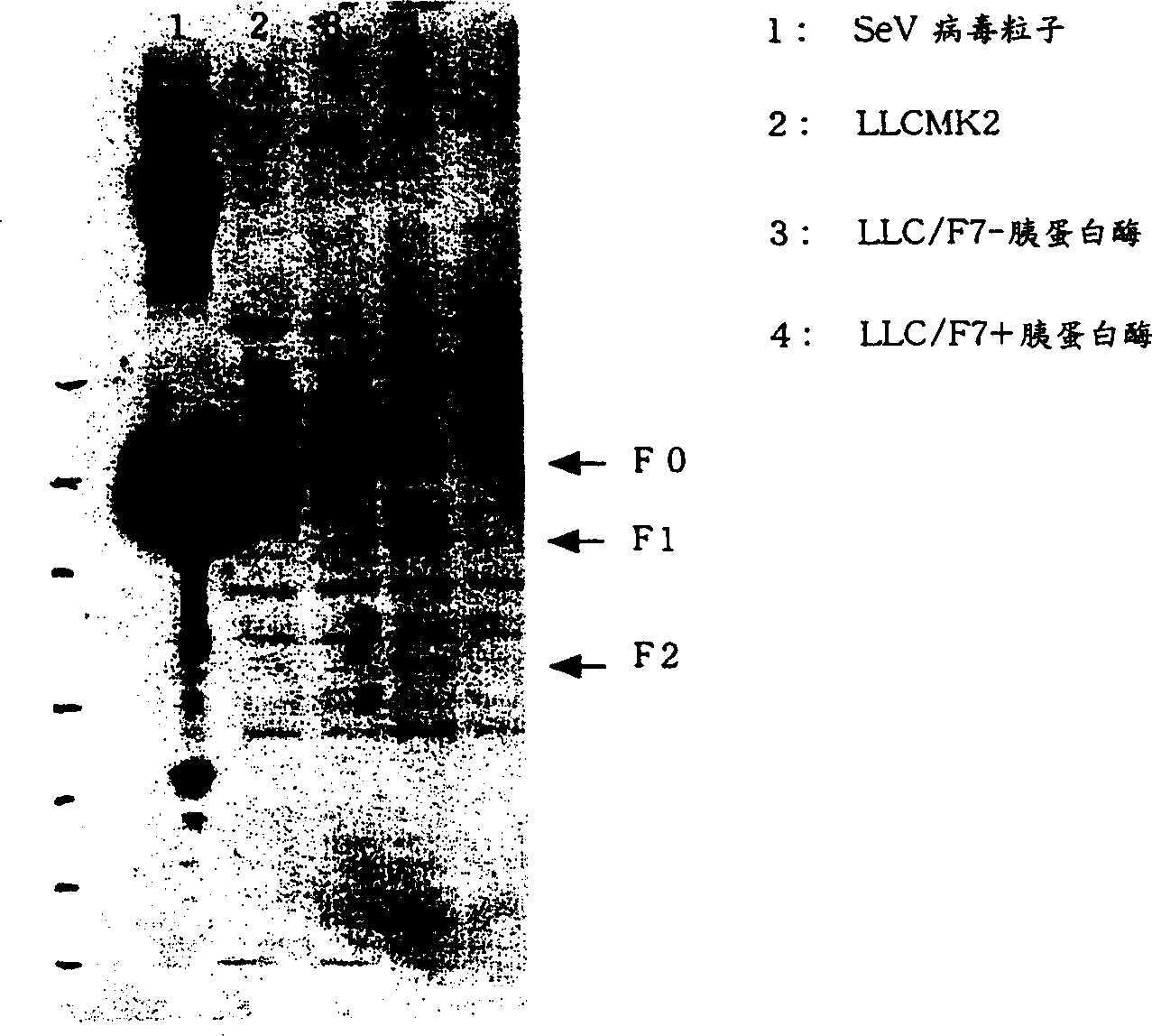Paramyxorividae virus vector defective in envelope gene
A technology of paramyxovirus and virus vector, applied in the direction of virus/bacteriophage, vector, virus, etc., can solve the problems of failure and achieve high gene transfer efficiency
- Summary
- Abstract
- Description
- Claims
- Application Information
AI Technical Summary
Problems solved by technology
Method used
Image
Examples
Embodiment 1
[0151] [Example 1] Construction of F-deficient Sendai virus
[0152] Construction of F-deficient SeV genome cDNA and plasmid expressing F
[0153] Digestion of Sendai virus (SeV) full-length genomic cDNA, pSeV18, with SphI / KpnI + b(+) (Hasan, M.K. et al., 1997, "Journal of General Virology" 78:2813-2820) ("pSeV18+b(+)" is also called "pSeV18 + ”), reclaim the resulting fragment (14673bp) and clone it into pUC18, which is named as plasmid pUC18 / KS. On this pUC18 / KS, the F-deficient site is constructed. By combining the method of PCR ligation reaction, the defect of the F gene is completed, As a result, the ORF of the F gene (ATG-TGA=1698bp) was removed; therefore, such atgcatgccggcagatga (SEQ ID NO: 1) was ligated thereto at the EcoT22I site to construct the F-deficient SeV genome cDNA (pSeV18 + / ΔF). In PCR, a PCR product generated by using a primer pair (forward: 5'-gttgagtactgcaagagc / SEQ ID NO: 2, reverse: 5'-tttgccggcatgcatgtttcccaaggggagagttttgcaacc / SEQ ID NO: 3) was l...
Embodiment 2
[0165] [Example 2] Confirmation of the function of SeV-F protein expressed by helper cells
[0166] It was tested whether the SeV-F protein induced by the helper cells retained the original protein function.
[0167] After seeding LLC-MK2 / F7 cells in a 6 cm dish and proliferating to confluence, they were infected with adenovirus AxCANCre (as described above) at a multiplicity of infection = 3 according to the method of Saito et al. Then, in an incubator at 37°C, 5% CO 2 Under conditions, the cells were cultured for 3 days in MEM (serum-free) containing trypsin (7.5 [mu]g / ml; GIBCOBRL).
[0168] The culture supernatant was discarded, the cells were washed twice with PBS buffer, scraped off with a spatula, and collected by centrifugation at 1500 xg for 5 minutes. As above (attached image 3 ) was confirmed by Western blot that the protein expressing F was cleaved by trypsin. The SeV-F protein was synthesized as F0, an inactive protein precursor which was then activated after...
Embodiment 3
[0169] [Example 3] Formation of functional RNP with F-deficient genome and virus particles
[0170] In order to recover virus particles from defective viruses, it is necessary to use cells expressing the defective protein. Therefore, when trying to recover the defective virus with cells expressing the defective protein, we found that the expression of the F protein by the helper cell line was quickly stopped due to the vaccinia virus used in the F-deficient SeV (attached Figure 5), thus viral reconstitution based on direct supply of the F protein from a helper cell line failed. It has been reported that vaccinia virus is incapable of replicating, but this can be achieved by treating vaccinia virus with long-wavelength ultraviolet light (long-wavelength UV) in the presence of added psoralen (PLWUV treatment) (Tsung et al., J. Virol. "70, 165-171, 1996), the activity of T7 expression was not weakened. Therefore, virus reconstitution was attempted by using PLWUV-treated vaccin...
PUM
| Property | Measurement | Unit |
|---|---|---|
| Titer | aaaaa | aaaaa |
Abstract
Description
Claims
Application Information
 Login to View More
Login to View More - R&D
- Intellectual Property
- Life Sciences
- Materials
- Tech Scout
- Unparalleled Data Quality
- Higher Quality Content
- 60% Fewer Hallucinations
Browse by: Latest US Patents, China's latest patents, Technical Efficacy Thesaurus, Application Domain, Technology Topic, Popular Technical Reports.
© 2025 PatSnap. All rights reserved.Legal|Privacy policy|Modern Slavery Act Transparency Statement|Sitemap|About US| Contact US: help@patsnap.com



